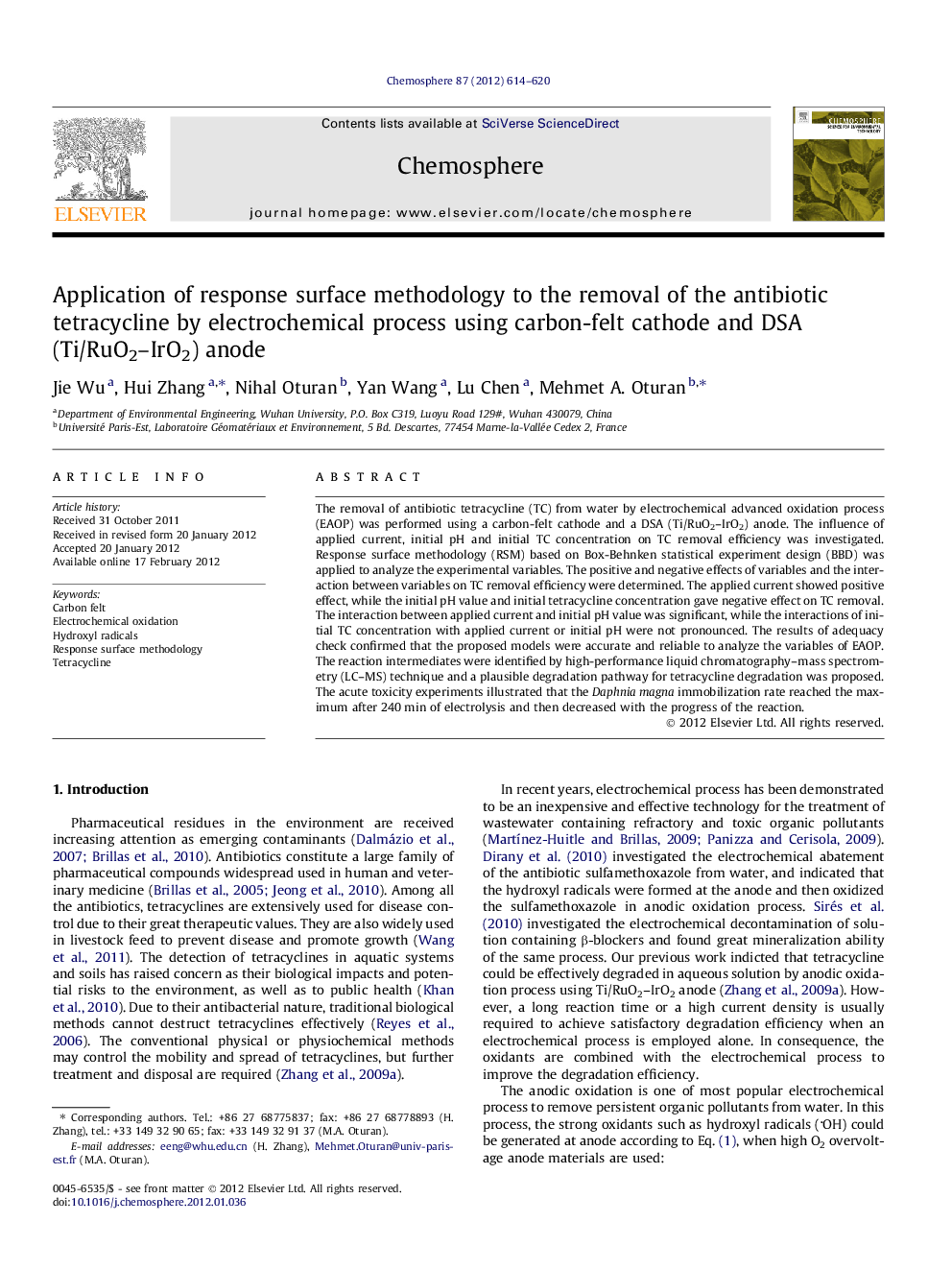| کد مقاله | کد نشریه | سال انتشار | مقاله انگلیسی | نسخه تمام متن |
|---|---|---|---|---|
| 4409754 | 1307506 | 2012 | 7 صفحه PDF | دانلود رایگان |

The removal of antibiotic tetracycline (TC) from water by electrochemical advanced oxidation process (EAOP) was performed using a carbon-felt cathode and a DSA (Ti/RuO2–IrO2) anode. The influence of applied current, initial pH and initial TC concentration on TC removal efficiency was investigated. Response surface methodology (RSM) based on Box-Behnken statistical experiment design (BBD) was applied to analyze the experimental variables. The positive and negative effects of variables and the interaction between variables on TC removal efficiency were determined. The applied current showed positive effect, while the initial pH value and initial tetracycline concentration gave negative effect on TC removal. The interaction between applied current and initial pH value was significant, while the interactions of initial TC concentration with applied current or initial pH were not pronounced. The results of adequacy check confirmed that the proposed models were accurate and reliable to analyze the variables of EAOP. The reaction intermediates were identified by high-performance liquid chromatography–mass spectrometry (LC–MS) technique and a plausible degradation pathway for tetracycline degradation was proposed. The acute toxicity experiments illustrated that the Daphnia magna immobilization rate reached the maximum after 240 min of electrolysis and then decreased with the progress of the reaction.
► The removal of antibiotic tetracycline was carried out by electrochemical process.
► Box-Behnken design (BBD) was applied to analyze the experimental variables.
► The main intermediate products were determined by LC–MS technique.
► A plausible degradation pathway of tetracycline was proposed.
► The changes of COD and the acute toxicity during the treatment were monitored.
Journal: Chemosphere - Volume 87, Issue 6, May 2012, Pages 614–620